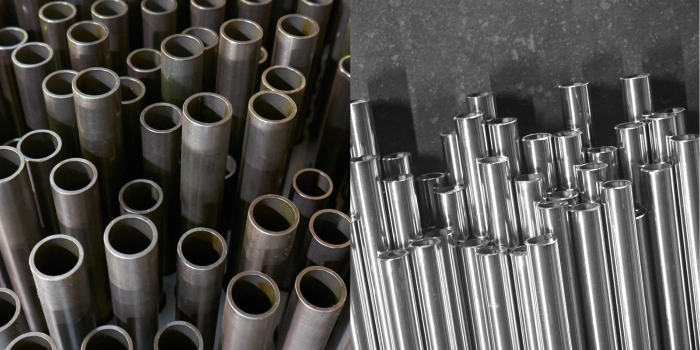Several parameters affect the cleaning performance of parts-cleaning equipment. Properly tuning the washer's performance ensures optimum cleaning results.
SELECTING THE PROPER PROCESS PARAMETERS
Exposure time
Typical wash cycles last 1–2 minutes for new, manufactured parts and 15–20 minutes for heavily soiled parts. Depending on the type of soil, longer cycle times may be required to allow the chemicals to react with the soils.
Operating temperature
Higher operating temperatures help activate the cleaner's full potential, melt greases, and soften stubborn soils. High operating temperatures also help reduce cycle duration but can increase operating costs.
Higher operating temperatures also assist with parts drying, since the heat transferred to the part during the wash cycle will increase the flash-drying effect and expedite the drying time.
Cleaner used
Several different types of cleaners are available for various substrates and soils. Typically, amine-based cleaners are recommended for washing newly manufactured components. Heavier-duty alkaline cleaners are better suited for cleaning heavily soiled components. However, some metals may oxidize due to heat and prolonged exposure. Using an inhibited cleaner will mitigate oxidation.
Mechanical action
A cleaner by itself is not sufficient to remove soils. High pressure and volume spraying provide the necessary mechanical action to remove surface contaminants and reduce cleaning time. You can find additional information on this subject at https://www.proceco.com/blogs/effect-of-machine-size-flow-and-pressure-in-cleaning
THE IMPORTANCE OF PROPERLY POSITIONING COMPONENTS
Parts orientation for proper drainage
To maintain proper spray-jet impingement on all surfaces, place parts with hollow cavities in such a way that the wash solution does not pool. This will also help avoid excessive transfer of wash solution into the rinse stage.
Shadowing between parts
Do not overload the washer, and ensure that parts do not touch. Overlapping and overloading will reduce cleaning efficiency. It may be tempting to overload a washer to meet production requirements, but it defeats the purpose if the parts do not come out clean the first time.
Proper exposure to spray nozzles and nozzle positioning
For proper cleaning, position parts as close as possible to the high-impact cleaning nozzles. Make sure that parts are in line with the spray nozzles as well.
The most popular spray nozzle is the flat V-jet, which provides a uniform spray pattern and delivers a high-impact spray, improving cleaning results. Proper alignment of the nozzle slots is crucial. Spray patterns must not intersect, as this will affect the impact of the spray and reduce the cleaning performance. The picture below shows a typical nozzle arrangement with the nozzles oriented at a 15-degree angle.

PREVENTATIVE MAINTENANCE
Cleaning chip filters
Filters trap chips and other solid particles to prevent them from being sprayed back onto cleaned parts. Clean the filters daily as clogged filters will also starve the wash pump, and spray nozzle performance will suffer.
Filters also protect the wash pump and spray nozzles from clogging by trapping larger contaminants. Cleaning the chip filters daily helps ensure the trouble-free operation of the washer.
Checking nozzles for blockage and wear
Visually inspect the nozzles for blockage, and make sure to remove and clean any clogged nozzles. Simply poking the dirt back into the nozzle will not work because turning on the pump will send the dirt back into the nozzle.
Over time, nozzles wear, and the nozzle’s orifice will get bigger. Wear affects the nozzle spray pattern, lowers pressure, and reduces spray impact, ultimately decreasing cleaning performance. A larger nozzle orifice also means increased flow, leading to increased amperage draw, which will trip the pump breaker.
Checking the tanks and heating system to remove accumulated debris
Scale build-up on heated surfaces reduces heating efficiency and may damage the heating system. Hard water is a major contributor to scale build-up, as the minerals present in the water will deposit on hot surfaces. The use of reverse osmosis will address this problem. Alternatively, using a cleaner with chelating agents will help soften the water.
Likewise, a build-up of sediments on the tank floor can lead to the corrosion of steel surfaces. The amount of sludge build-up will depend on the types of contaminants removed from the parts. Always remove excess sludge when it builds up to more than an inch thick.
MONITORING WASH SOLUTION (MAINTAINING WASHING EFFECTIVENESS)
Titration
Use titration to measure the concentration of cleaner in the washer. Keep a logbook to record changes in the pH to determine when you need to change the solution.
A pH drop may indicate that the solution needs to be changed.
Replacing solution when it is saturated
The cleaning solution’s ability to hold on to soils is finite. At a certain point, the solution becomes saturated, and adding more soap will not improve cleaning results. It is then time to change the solution. When replenishing the solution, use a chemical dosing system to obtain a proper cleaner-to-water ratio.
Removal of floating oils
Skimming floating oils will extend the life of the cleaning chemical and prevent floating oils from being entrained into the pump flow and deposited on cleaned parts. For optimal results, skim the oils during off hours, when the oils typically float to the top of the solution. Using a seven-day timer to program, the oil skimmer operation will ensure regular removal of the oils.
Schedule a free consultation with the PROCECO team today.


.jpg)
.jpg)